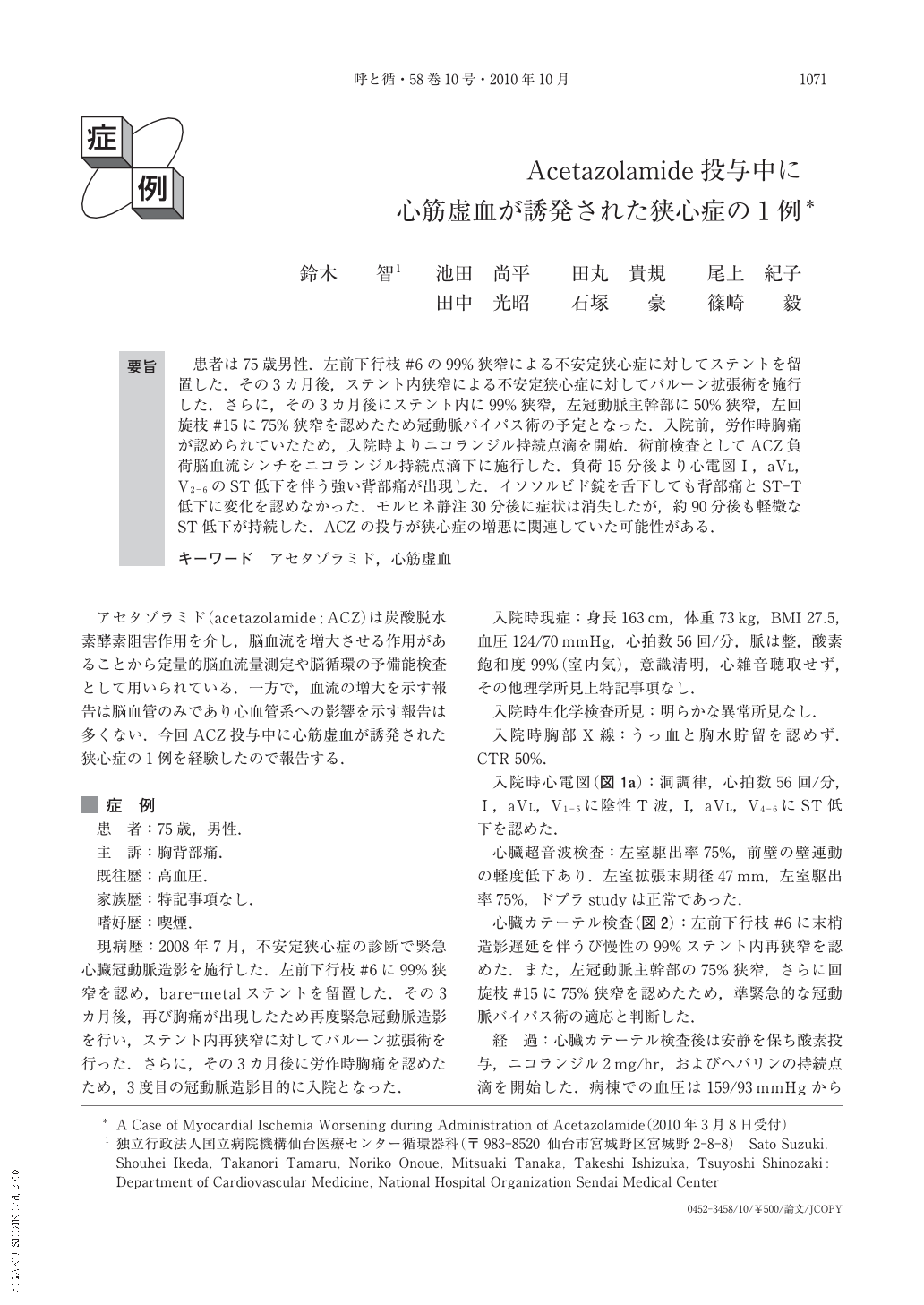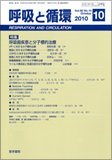Japanese
English
- 有料閲覧
- Abstract 文献概要
- 1ページ目 Look Inside
- 参考文献 Reference
要旨 患者は75歳男性.左前下行枝#6の99%狭窄による不安定狭心症に対してステントを留置した.その3カ月後,ステント内狭窄による不安定狭心症に対してバルーン拡張術を施行した.さらに,その3カ月後にステント内に99%狭窄,左冠動脈主幹部に50%狭窄,左回旋枝#15に75%狭窄を認めたため冠動脈バイパス術の予定となった.入院前,労作時胸痛が認められていたため,入院時よりニコランジル持続点滴を開始.術前検査としてACZ負荷脳血流シンチをニコランジル持続点滴下に施行した.負荷15分後より心電図Ⅰ,aVL,V2-6のST低下を伴う強い背部痛が出現した.イソソルビド錠を舌下しても背部痛とST-T低下に変化を認めなかった.モルヒネ静注30分後に症状は消失したが,約90分後も軽微なST低下が持続した.ACZの投与が狭心症の増悪に関連していた可能性がある.
A coronary artery bypass operation was scheduled for a 75-year-old man with 50% stenosis in the left main trunks, 99% in-stent restenosis in#6 of left anterior descending coronary artery and 75% stenosis in#15 of left circumflex coronary artery. As a preoperative test, an acetazolamide(ACZ)-stress scintigram test for evaluation of cerebral blood flow reserve was performed with continuous intravenous infusion of nicorandil. Strong back and chest pain with ST depression in I, aVL and V2-6 occurred 15 minutes later after intravenous injection of ACZ. Isosorbide dinitrate failed both to relieve the symptom or to reverse ST-T change. Intravenous morphine successfully relieved the symptom, but ST segment continued to depress for more than 90min. Thus, ACZ may be associated with worsening of myocardial ischemia.

Copyright © 2010, Igaku-Shoin Ltd. All rights reserved.


